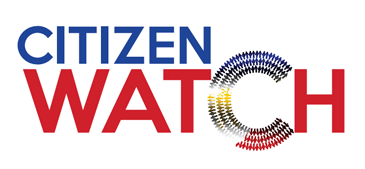Digital infrastructure EO is critical to nationwide connectivity
January 23, 2023originally published in The Manila Standard
“We fully support and join the PSAC’s call for the permanent enforcement of ARTA’s JMCs on telecoms and digital infrastructure and urge the President to swiftly act on this EO”
The recent pronouncements of President Ferdinand “Bongbong” Marcos Jr. about his administration’s drive to digitize the bureaucracy at World Economic forum in Switzerland is the latest of a series of statements emphasizing the urgency to ensure digital infrastructure are in place to connect every Filipino.
He has also engaged the Private Sector Advisory Council and received recommendations on how to strengthen the country’s digital infrastructure.
President Marcos Jr’s approach of harnessing the expertise of the private sector is a stark contrast to the former President Duterte’s irreverent and alienating demeanor towards the leading telecommunications companies and even threatening them with a government take over.
I remember watching the evening news of a consultation meeting in Malacañang where Duterte jokingly said to Globe Telecoms president Ernest Cu that he would hang him from one of his cell towers if Globe’s services will not improve by the end of the year.
Cu wittingly answered, “Mayor, you cannot do that because there is no tower. The local governments are all f*cking it up, that’s why. So where will you hang me? On a coconut tree?”
Cu then explained that telcos have been delayed by about 30 permits for each tower they build so you can imagine the red tape nightmare of building thousands of cell sites that in worst cases can take a year.
Apparently, this problem has been going on for many administrations.
In 2020, the Anti Red Tape Authority, the Department of Information and Communications Technology, and all the relevant agencies that are part of the gauntlet of permits, issued two Joint Memorandum Circulars (JMC 1 series 2020 and 2021) to drastically cut down the number and timeline of the permitting for the construction of telecommunications and internet infrastructure.
To further illustrate the bureaucratic craziness that telcos had to go thru, the other agencies that had to be involved in these JMC’s are the Department of the Interior and Local Government for local government issues, the Department of Public Works and Highways for building permits, Department of Health for health permits, the Civil Aviation Authority of the Philippines on tower height issues, Department of Human Settlements and Urban Development, the Food and Drug Administration, the National Telecommunications Commission, and the Bureau of Fire Protection.
JMC 1 series 2020 resulted in the building and operationalizing of approximately 7,000 towers in only 18 months.
This was achieved by reducing the number of permits for telco towers from 13 to 8, and the number of documentary requirements from 86 to 35.
These reforms cut down the timeline from 8 delay riddled months to only 16 days.
On the other hand, JMC 1 series 2021 which focuses on the issuance of permits and clearances for the other, likewise critical, digital infrastructures such as poles, underground fiber ducts, and the installation of aerial and underground cable facilities necessary for telecommunications and internet services significantly streamlined the process aligned with the JMC for telcos and reduced the timeline from 2 and half years to 2 and a half months.
By the middle of 2022, the rate of tower construction increased by 311 percent with the total now approaching 30 thousand telco towers.
Though still below what the DICT sees as a 50 thousand backlog in telco towers, the Philippine’s internet speed index has improved and has been on an upward trajectory.
According to the November 2022 Ookla Speedtest Global Index for fixed broadband, the Philippines is now ranked 45th, a 21-step improvement from 71st in October 2021 with rating of 81.42 MBPS.
Mobile internet also improved and rated at 24.04 MBPS and gaining 13 notches to 80th from 93rd.
These are encouraging results but just as President Marcos Jr remarked during the telco summit last December, the Philippines’ connectivity rate is “still pretty low” and has to improve.
He said, “That’s not good enough, especially for an archipelagic country such as ours where connectivity is exceedingly important because we have many isolated communities who need some form of contact, some form of communication with the rest of the country, with the rest of the world.”
The digital infrastructure group of PSAC composed of representatives of the leading telecommunications companies and banks will initially be focusing on a nationwide expansion of access to internet connectivity and digitalization initiatives.
Top priority is of course addressing the gaps in telecommunications and digital infrastructure where the telcos are ready to lead with their resources and expertise.
However, the effectivity of the JMCs on telecommunications and digital infrastructure will soon expire in July prompting the PSAC’s first recommendation to be immediately institutionalized into an Executive Order to sustain the compliance of the relevant government agencies and local government units.
As a convenor of consumer advocacy group CitizenWatch Philippines, we fully support and join the PSAC’s call for the permanent enforcement of ARTA’s JMCs on telecoms and digital infrastructure and urge the President to swiftly act on this EO.
